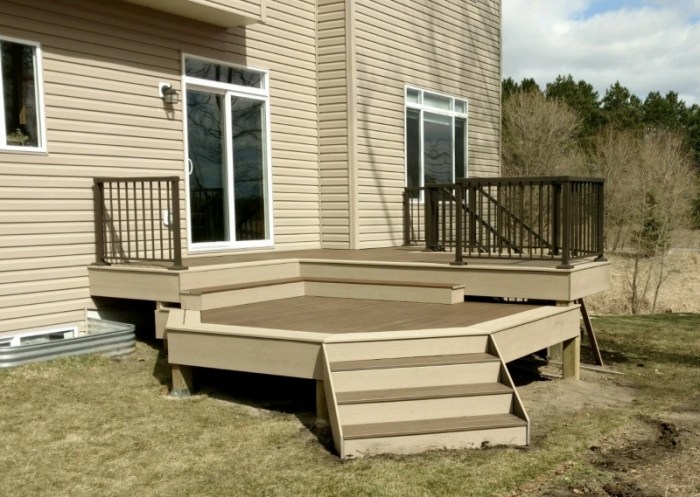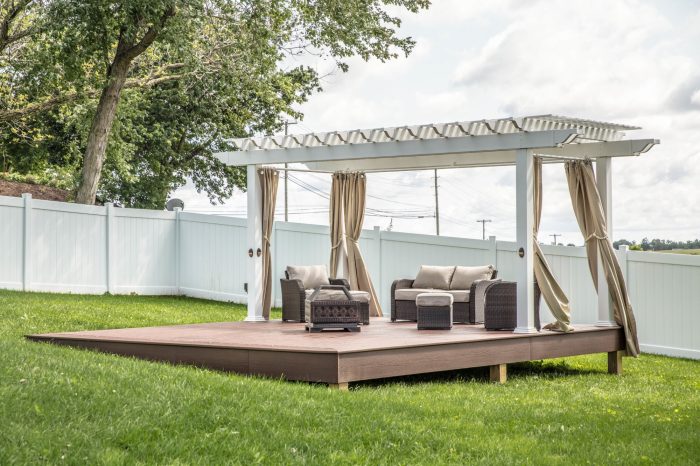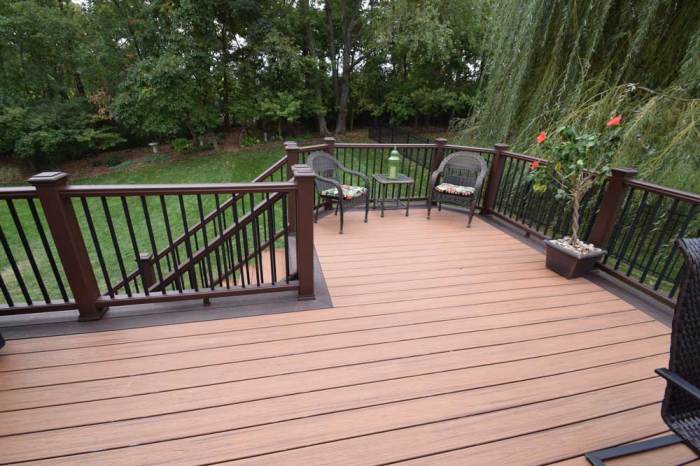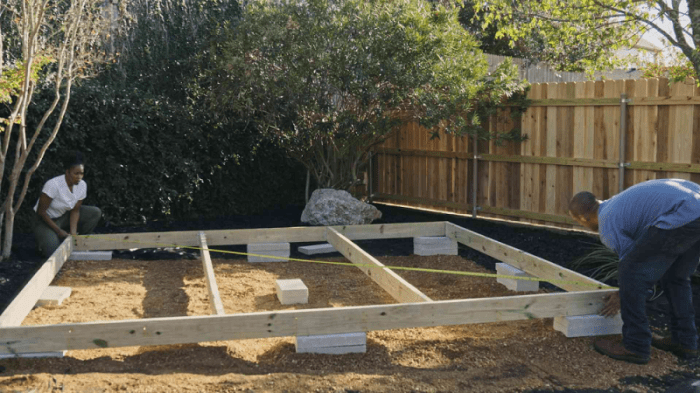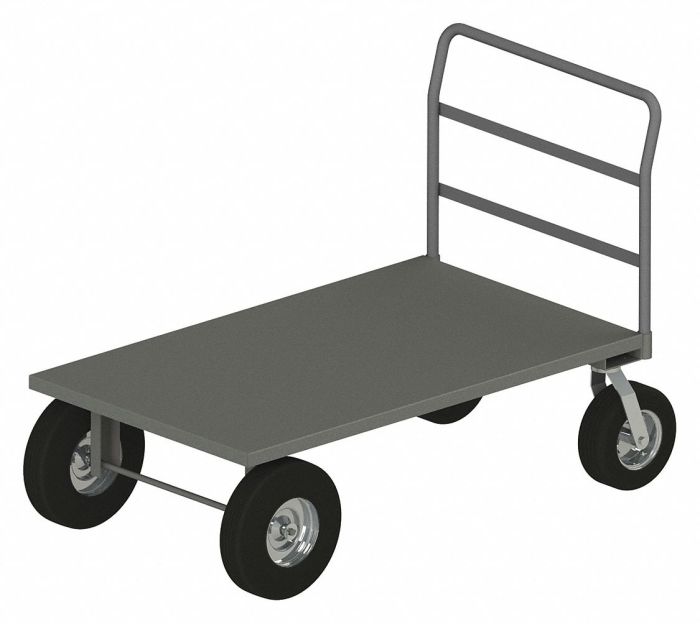Building a Hot Tub Platform A Comprehensive Guide
Building a hot tub platform sets the stage for relaxation and enjoyment, transforming your outdoor space into a luxurious oasis. This comprehensive guide walks you through every step, from meticulous planning to the final touches, ensuring your hot tub platform is not just functional but also aesthetically pleasing.
We’ll cover everything from site assessment and material selection to construction techniques and safety considerations. Detailed plans, cost breakdowns, and maintenance tips will equip you with the knowledge to create a stunning hot tub platform that meets your specific needs and budget.
Project Planning & Design
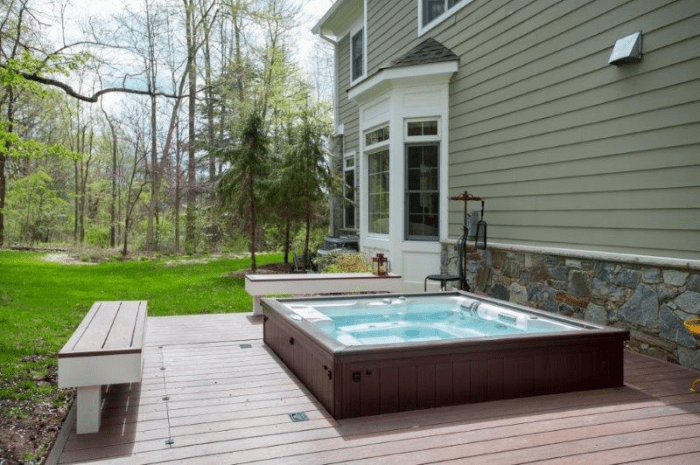
Source: byrossi.com
Planning a hot tub platform requires careful consideration of site suitability, structural design, and material selection. A well-designed platform ensures the safety and longevity of the hot tub and the surrounding area. Proper planning will minimize potential issues and maximize the enjoyment of your new hot tub.
Careful assessment of the chosen site is critical for a successful project. Factors such as soil type, slope, and proximity to utilities will significantly impact the platform’s design and construction. Understanding these factors upfront will save time and money in the long run.
Site Suitability Assessment
Evaluating a site for a hot tub platform involves a systematic inspection of the location. This process helps to identify potential issues and determine if the site is suitable for the project. Key considerations include soil composition, drainage patterns, and existing utilities. A thorough assessment helps prevent costly issues later in the construction process.
- Soil Conditions: Examine the soil type and its bearing capacity. Clay soils, for example, may require specialized foundations due to their tendency to shrink and swell. Loose or sandy soils may require additional support structures to ensure stability. A soil test is recommended to determine the specific properties of the soil at the site.
- Drainage: Assess the drainage patterns in the area. Poor drainage can lead to water accumulation around the hot tub platform, causing damage and discomfort. If necessary, drainage improvements may need to be incorporated into the design to prevent water issues.
- Slope: A level site is ideal. Significant slopes may require retaining walls or terracing to ensure stability and prevent erosion. The slope of the land should be taken into account during the design phase.
- Proximity to Utilities: Identify the location of underground utilities like pipes and cables. A site plan is important to avoid damaging these utilities during construction.
Hot Tub Platform Size and Shape
The size and shape of the platform are crucial for both the hot tub’s functionality and the aesthetics of the surrounding area. Consider the dimensions of the hot tub itself, along with any additional features such as seating areas or access pathways. The platform’s design should enhance the overall experience.
- Hot Tub Dimensions: The hot tub’s dimensions dictate the minimum size of the platform. Adequate space around the hot tub is essential for safe access and comfortable use.
- Additional Features: Include space for steps, seating, and any other features that enhance the hot tub experience. A deck or seating area around the platform can increase its functionality.
- Aesthetics: Consider the overall design and aesthetics of the surrounding area. The platform should complement the existing landscape design and add to the visual appeal.
Basic Blueprint and Safety Features
A blueprint provides a visual representation of the hot tub platform’s design. It should include essential structural elements and safety features to ensure the platform’s stability and user safety. A well-defined blueprint streamlines the construction process.
| Component | Description | Safety Feature |
|---|---|---|
| Platform Frame | Provides structural support for the entire platform. | Reinforced corners and joints to prevent warping or cracking. |
| Decking | The surface material for walking and use. | Non-slip material to prevent accidents. |
| Handrails | Provide support for users entering and exiting the platform. | Securely attached handrails for support and stability. |
| Drainage System | Allows water to drain away from the platform. | Properly sloped surface for efficient water drainage. |
Materials List
The following materials are necessary for constructing a hot tub platform. Specifications should be determined based on the chosen design.
- Concrete: For the foundation and support structures. Concrete type and reinforcement should be chosen based on soil conditions and load requirements. Proper mixing and curing are essential for durability.
- Pressure-treated Lumber: For framing the platform. Choose pressure-treated lumber to resist rot and decay. Specify the required dimensions for the lumber.
- Decking Material: For the platform surface. Select a non-slip material suitable for outdoor use. Choose a material that is resistant to moisture and weathering.
- Fasteners: Screws, nails, and other fasteners for assembling the platform. Choose appropriate sizes and types for the materials being used.
Foundation Types
The choice of foundation depends on the soil conditions at the site. Different foundation types provide varying levels of support and stability.
- Slab Foundation: A concrete slab poured directly on the ground. Suitable for stable soil conditions.
- Pier and Beam Foundation: Supports the platform on piers that are raised above the ground. Suitable for uneven or unstable soil conditions.
- Crawl Space Foundation: Suitable for areas with high water tables or unstable soil. Creates a space between the platform and the ground.
Platform Base Construction
A level and stable platform base is essential for the longevity and safety of the hot tub platform. A properly constructed base prevents uneven settling and ensures the platform’s stability.
- Site Preparation: Clear the area of debris and vegetation. Ensure the site is level and compacted to avoid future settling issues.
- Foundation Installation: Install the chosen foundation type based on soil conditions. Follow the manufacturer’s instructions carefully.
- Platform Framing: Assemble the platform frame according to the blueprint. Ensure all connections are secure and stable.
- Decking Installation: Install the decking material securely and level. Allow sufficient time for the concrete to cure properly before installing decking.
Material Selection & Procurement: Building A Hot Tub Platform
Choosing the right materials and ensuring proper procurement are critical for a successful hot tub platform build. Careful consideration of factors like budget, durability, and aesthetics is paramount. This section delves into the various material options, waterproofing techniques, drainage systems, and associated costs. Understanding these aspects is vital for a sound project execution.
Material Comparison for Hot Tub Platforms
Different materials offer varying strengths and weaknesses for hot tub platforms. Factors like weight capacity, weather resistance, and aesthetic appeal play significant roles in the selection process.
- Concrete: Concrete platforms are highly durable and can withstand significant weight. They are exceptionally long-lasting, but installation can be more complex and costly compared to other options. They also offer a versatile aesthetic, from smooth surfaces to textured finishes. Concrete’s high compressive strength is ideal for supporting heavy hot tubs.
- Composite Decking: Composite decking platforms are known for their low maintenance and resistance to rot, insects, and moisture. They are aesthetically pleasing and come in a variety of colors and textures. However, they may not offer the same weight capacity as concrete, and cost can vary depending on the specific composite material and finish.
- Treated Lumber: Treated lumber is a more budget-friendly option, but it requires regular maintenance to prevent rot and decay. Its lifespan is shorter than concrete or composite decking, and it might not be suitable for areas with extreme weather conditions. Properly treated lumber can be a viable choice for platforms with a moderate load capacity, especially in regions with relatively stable weather.
Waterproofing Methods for Hot Tub Platforms
Effective waterproofing is essential to prevent water damage and maintain the longevity of the platform. A variety of techniques are available, each with its advantages and disadvantages.
- Membrane Waterproofing: Applying a waterproof membrane to the platform’s base is a common technique. This method often involves using specialized membranes designed to resist water penetration. It’s a good choice for concrete or composite decking platforms.
- Elastomeric Coatings: Elastomeric coatings offer flexibility and resilience, making them suitable for platforms that may experience some movement. They’re often used for concrete and composite surfaces to prevent moisture ingress.
- Sealants and Caulking: Using sealants and caulking around joints and edges is a crucial step in preventing water infiltration. This technique is important for all types of platforms to ensure complete waterproofing.
Drainage Considerations for Hot Tub Platforms, Building a Hot Tub Platform
Proper drainage is vital for preventing water accumulation around the hot tub platform. This prevents damage to the platform and ensures the safety of the users.
- Sloped Surfaces: Designing the platform with a gradual slope towards a drainage system is crucial. This allows water to drain away from the platform effectively.
- Gutters and Downspouts: Installing gutters and downspouts can divert rainwater away from the platform’s base, preventing water buildup.
- French Drains: French drains can be used to collect and divert water away from the platform base in areas with high water tables. This provides a more comprehensive drainage solution.
Cost Analysis of Materials and Construction Methods
The cost of a hot tub platform varies greatly depending on the chosen materials, construction methods, and location. Labor costs and material prices can fluctuate.
| Material | Approximate Cost Range (per square foot) | Additional Notes |
|---|---|---|
| Concrete | $10-$25 | Labor costs can be significant, and additional reinforcement may be needed. |
| Composite Decking | $15-$30 | Higher initial cost but lower long-term maintenance. |
| Treated Lumber | $5-$15 | Requires regular maintenance and may not be suitable for all climates. |
Permits and Regulations
Local building codes and regulations dictate the necessary permits and inspections for constructing a hot tub platform.
- Permit Requirements: Consult local authorities for specific requirements regarding permits, inspections, and building codes. Contact your local building department to obtain the required documentation.
- Compliance: Adhering to local regulations is crucial for avoiding penalties and ensuring a safe and legal construction.
Fastener and Connector Selection
Selecting the appropriate fasteners and connectors is essential for ensuring the platform’s structural integrity. This depends on the platform’s design and materials.
- Material Compatibility: Ensure the chosen fasteners and connectors are compatible with the platform’s materials to avoid corrosion or other issues.
- Load Capacity: Select fasteners and connectors with a load capacity sufficient to support the weight of the hot tub and potential additional loads.
Construction Techniques & Procedures
This section details the various methods for constructing a hot tub platform, from pouring concrete to assembling prefabricated components and installing decking. Careful attention to these procedures ensures a sturdy, level platform for your hot tub, guaranteeing long-term enjoyment.
Concrete pouring methods, component assembly, and decking installation are critical steps in building a stable hot tub platform. Proper execution of these steps minimizes risks and maximizes the platform’s lifespan. Ensuring precise alignment and leveling of the hot tub on the platform is crucial for a safe and enjoyable experience.
Concrete Pouring Methods
Different concrete pouring methods offer varying levels of control and precision. Choosing the right method depends on the size and complexity of the platform. Common methods include using forms to create a mold for the concrete, which offers greater control over the shape and dimensions. Alternatively, a more straightforward method involves pouring concrete directly into a prepared area, suitable for simpler platforms. The choice depends on factors like the platform’s size, desired aesthetic, and the builder’s experience level. Each method necessitates careful planning and preparation to ensure a stable and level platform.
Prefabricated Platform Assembly
Prefabricated hot tub platforms often consist of interlocking panels or sections. Assembly typically involves precise alignment of the components, using pre-drilled holes for secure fastening. Instructions provided by the manufacturer should be meticulously followed. Tools such as a level, measuring tape, and power drill will be essential for accurate and efficient assembly. This method often reduces construction time and ensures a structurally sound platform. Quality prefabricated platforms are often designed for ease of assembly, minimizing errors.
Decking Installation
Decking materials add the finishing touch to a hot tub platform. The chosen material, such as composite or wood, will influence the installation process. Careful consideration of the substructure’s stability is vital. The steps usually involve preparing the platform surface, securing the decking boards, and ensuring proper spacing and drainage. High-quality fasteners are crucial for securing the decking boards. Correct installation of decking materials ensures durability and aesthetic appeal. Precise measurements and careful planning are critical for a smooth installation.
Hot Tub Securing Methods
Securing the hot tub to the platform is essential for stability and safety. Different methods offer varying levels of support. The choice depends on the hot tub’s weight and the platform’s design. A table comparing common methods follows:
| Method | Description | Pros | Cons |
|---|---|---|---|
| Bolting | Using bolts and anchors to directly attach the hot tub to the platform. | Strong, secure attachment. | Requires pre-drilling and precise alignment. |
| Anchor Bolts | Using specialized anchor bolts that are integrated into the platform during construction. | Prevents shifting. | It can be more complex to install. |
| Welding | Welding brackets or frames to the hot tub and platform. | Extremely strong attachment. | Requires specialized equipment and expertise. |
Hot Tub Installation on Platform
Once the platform is prepared and the hot tub is ready, the installation process begins. Carefully lifting the hot tub onto the platform is essential to minimize stress on the hot tub’s components. Positioning the hot tub over the designated area and securing it with the chosen method are critical steps. Using lifting equipment, like a crane or specialized lifting straps, is often required for larger hot tubs. This ensures the hot tub is positioned centrally on the platform.
Alignment and Leveling
Precise alignment and leveling of the hot tub are crucial for a safe and stable installation. Use a level and measuring tools to ensure the hot tub sits perfectly horizontal. Adjustments to the leveling system might be required depending on the hot tub’s frame and the platform’s construction. Slight adjustments to the supporting structure may be needed to achieve the desired alignment. This step ensures a safe and enjoyable hot tub experience.
Safety & Maintenance
Building a hot tub platform requires meticulous attention to safety throughout the entire process. Proper maintenance is crucial to preserve the structural integrity and longevity of the platform, ensuring the safety and enjoyment of the hot tub users for years to come. This section will cover crucial safety precautions, maintenance procedures, and issue resolution strategies for hot tub platforms.
A well-maintained hot tub platform reduces the risk of accidents and ensures the platform remains structurally sound. This includes regular inspections for potential issues and prompt repairs to prevent larger problems.
Safety Precautions During Construction
Careful planning and adherence to safety protocols are paramount during construction. This involves the use of appropriate safety equipment, such as hard hats, safety glasses, and work gloves. Proper lifting techniques and the use of appropriate lifting equipment are essential to avoid injuries. Construction workers must be properly trained and supervised to ensure adherence to safety standards and procedures. The site should be meticulously organized to minimize trip hazards. Electrical work must be handled by qualified electricians, and any potential tripping hazards or obstructions should be removed from the construction area.
Importance of Proper Maintenance
Regular maintenance is critical to preventing structural damage to the hot tub platform. Routine inspections and prompt repairs can save significant costs associated with major repairs or replacements. Proper maintenance ensures the platform remains stable and resistant to environmental factors such as weather, temperature fluctuations, and ground settling. Ignoring maintenance can lead to costly repairs or even the complete failure of the platform, compromising the safety of those using the hot tub.
Identifying and Addressing Potential Issues
Regular inspections are vital to identifying and addressing potential issues early. Look for cracks, settling, or signs of damage in the platform’s structural components. If cracks are observed, they should be promptly repaired using appropriate materials and techniques. The settling of the platform can be caused by soil movement or inadequate foundation support. Addressing the settling issue promptly can prevent further damage and ensure the platform’s structural integrity. Contacting a structural engineer or qualified contractor for assessment and repair is recommended for significant structural issues.
Recommended Maintenance Procedures
- Regular Visual Inspection: Periodically check the platform for any signs of damage, such as cracks, warping, or rust. Note any changes in the platform’s alignment or stability.
- Cleaning and Pressure Washing: Regular cleaning and pressure washing can help remove debris and prevent the buildup of dirt and grime, which can accelerate corrosion.
- Foundation Inspection: Examine the foundation for signs of settling or movement. Ensure the foundation remains stable and adequately supports the platform.
- Concrete Maintenance: If the platform has a concrete slab, protect it from damage by sealing and repairing any cracks promptly. Concrete slabs require routine maintenance to prevent cracking and weathering.
- Drainage Assessment: Ensure proper drainage around the platform to prevent water accumulation, which can lead to structural issues or mold growth.
Potential Hazards and Mitigation Strategies
| Potential Hazard | Mitigation Strategy |
|---|---|
| Falling objects | Use safety harnesses and appropriate lifting equipment; secure all materials and tools during construction. |
| Electrical hazards | Ensure electrical work is performed by licensed electricians; use GFCI outlets and properly grounded equipment. |
| Slips, trips, and falls | Maintain a clear and organized work area; use appropriate footwear and safety equipment; address potential trip hazards promptly. |
| Exposure to harsh weather | Protect the platform from extreme weather conditions; cover the platform during inclement weather. |
| Ground settling | Ensure the platform is built on a stable foundation; consider geotechnical studies for complex or challenging sites. |
Common Repairs and Maintenance Tasks
- Crack Repair: Repairing cracks in concrete or other materials using appropriate patching compounds or epoxy.
- Rust Removal and Painting: Removing rust and repainting metal components to prevent further corrosion.
- Drainage System Repair: Repairing or replacing damaged drainage systems to ensure proper water flow away from the platform.
- Foundation Reinforcement: Reinforcing the foundation if settling is detected.
- Platform Leveling: Leveling the platform to ensure proper support and stability.
Aesthetic Considerations & Customization
Crafting a hot tub platform that complements your outdoor space requires careful consideration of aesthetics and customization options. A well-designed platform can transform a simple backyard area into a luxurious retreat. This section explores various design styles, landscaping integration, lighting, and other features to achieve a truly personalized and visually appealing hot tub experience.
Careful consideration of the aesthetic aspects of the platform is crucial. This ensures that the platform seamlessly blends with the existing landscaping and enhances the overall beauty of the outdoor space. Choosing the right design style, incorporating landscaping elements, and adding thoughtful lighting features all contribute to the platform’s visual appeal and create a relaxing atmosphere.
Design Styles
Different design styles can be incorporated into the hot tub platform to match the overall aesthetic of the outdoor space. Modern designs often feature clean lines, minimalist forms, and a focus on functionality. Rustic styles, conversely, embrace natural materials and textures, creating a warm and inviting ambiance. Transitional designs blend elements of both modern and rustic styles, providing a more versatile option.
Landscaping Integration
Integrating landscaping elements around the hot tub platform is essential to create a cohesive and visually appealing outdoor space. Consider incorporating low-maintenance landscaping such as native plants or carefully selected shrubs and flowers that complement the platform’s design. Adding pathways or retaining walls can define spaces and create visual interest. The goal is to create a seamless transition between the platform and the surrounding environment.
Lighting & Features
Strategic lighting can significantly enhance the aesthetic appeal of the hot tub platform. Consider using ambient lighting, such as pathway lights or string lights, to create a warm and inviting atmosphere. Uplighting on trees or landscaping features can highlight key elements of the design. Water features, such as small fountains or waterfalls, can add a tranquil touch. Consider incorporating a pergola or gazebo for shade and added visual interest.
Color Options & Finishes
| Material | Color Options | Finishes |
|---|---|---|
| Concrete | Gray, Beige, Brown, Black | Smooth, Textured, Stamped |
| Wood (e.g., cedar, redwood) | Natural, Stained (various colors), Painted | Stained, Painted, Sealed |
| Stone (e.g., flagstone, pavers) | Various shades of gray, beige, brown, black, and even vibrant colors | Natural, Sealed |
| Composite decking | Various colors, including wood-like tones, and contemporary colors | Smooth, textured, stained |
Choosing the right color palette and finish for the platform materials is crucial for creating a harmonious aesthetic.
Seating & Amenities
Adding seating or other amenities to the platform can enhance its functionality and comfort. Consider adding comfortable seating arrangements, such as benches or lounge chairs, to encourage relaxation. Storage solutions, such as built-in cabinets or benches with storage, can keep the area organized and clutter-free. Outdoor grills, fire pits, or built-in bar areas can further enhance the platform’s versatility and appeal.
Platform Integration with Existing Landscaping
Integrating the platform with existing landscaping or outdoor spaces is crucial for creating a cohesive and visually appealing design. Consider the existing plants, trees, and pathways when designing the platform’s layout. Use similar materials and colors in the platform and surrounding landscaping to maintain a harmonious aesthetic. Existing hardscapes, such as patios or walkways, should be considered during the design phase to ensure seamless transitions and avoid visual inconsistencies.
Concluding Remarks
In conclusion, building a hot tub platform is a rewarding project that requires careful planning and execution. This guide provides a roadmap for every stage, from initial design to final maintenance. By understanding the various aspects, including materials, construction methods, and safety precautions, you can confidently create a safe, beautiful, and enjoyable hot tub platform that will be a treasured part of your outdoor living space for years to come.
